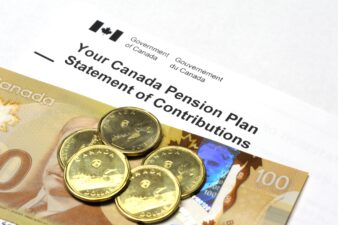In a common tax management strategy, young Canadian investors are encouraged to contribute the maximum allowable funds first into a Tax-Free Savings Account (TFSA), while they are still in a lower income tax bracket, and delay making contributions to Retirement Savings Plans (RRSPs) until a later period. The expectation is that annual incomes will grow with work experience, job promotions, and better investment returns, leading to a higher tax bracket.
The idea is commendable as it may improve one’s personal tax efficiency over a life time.
After all, RRSP contributions are tax-deferred deductibles that reduce your tax bill upfront, while withdrawals (which become taxable) may be made later in retirement when the taxpayer is expected to have migrated back to a lower tax bracket. Hence making RRSP deductions during high income periods is quite an idea.
It follows that TFSA contributions, which incur taxes upfront, should be prioritized early in your career when annual salaries are is still low and the CRA is still charging lower marginal tax rates.
That said, there are two special scenarios under which a Canadian investor may want to locate their early savings in an RRSP first before considering maxing out their TFSA contribution room.
Consider these two tax management tools.
When buying or building a first home
If saving for your first house, then you could make best use of the Home Buyers Plan in an RRSP.
This plan allows investors to withdraw, tax free, from an RRSP in order to make a down payment on their first home or toward building their first house. For the 2019 tax period, a withdrawal of up to $35,000 from the plan was allowed, and the funds can be paid back into the account within 15 long years.
Any withdrawals beyond the prescribed limit will become taxable for the year, so it’s better to invest the remaining down payment balance in a TFSA.
This opportunity is also accessible if buying a first home for a relative with a disability.
When saving for an education
If you intend to go into full-time studies, there’s the Lifelong Learning Plan. It allows plan investors to withdraw up to $20,000 from RRSP over four years during the study period.
Withdrawals aren’t restricted to tuition payments only – they just need to be made during the full-time study years. Repayments can be made within 10 years.
The facility is available for a spouse, so a couple could effectively enjoy double the limit.
How to invest the contributions
Generally, any money that is being set aside for a specific purpose and meant to be withdrawn at a specific date should be invested in securities that allow it to be available on that intended withdrawal date with reasonable certainty.
Bonds, GICs, and other fixed income instruments have historically been the best choices for such dedicated savings due to their low capital risk and reliable cash flows, but yields are gone these days and investors have to take on higher risk to get reasonable returns.
Better yields can be found in real estate investment trusts (REITs) today and one of the available options to consider is the iShares S&P/TSX Capped REIT Index ETF (TSX:XRE), a BlackRock-managed exchange-traded fund that offers a cheap investment access to 19 Canadian REITs. The fund is diversified and composed of residential (26.56% of portfolio), office (13%), retail (30%), and industrial REITs (11%), while diversified REITs and health care focused ones occupy 16% and 3% of the fund’s portfolio, respectively.
The ETF tracks the S&P/TSX Capped REIT Index and its 178% in total returns over the past 10 years trumped the S&P/TSX Composite Index‘s 49% gain by a very significant margin.
XRE has a strong $1.4 billion in assets under management today, making it the largest REIT ETF among its direct competitors and it offers monthly distributions that yielded 4.8% over the past 12 months. Management fees and expenses are reasonably low with an expense ratio of just 0.61%.
Most noteworthy, XRE’s performance significantly mimics the performance of Canadian real estate, meaning that if property prices keep rising, the investor could be reasonably covered for their home purchase goal by the positively correlated higher investment returns.







